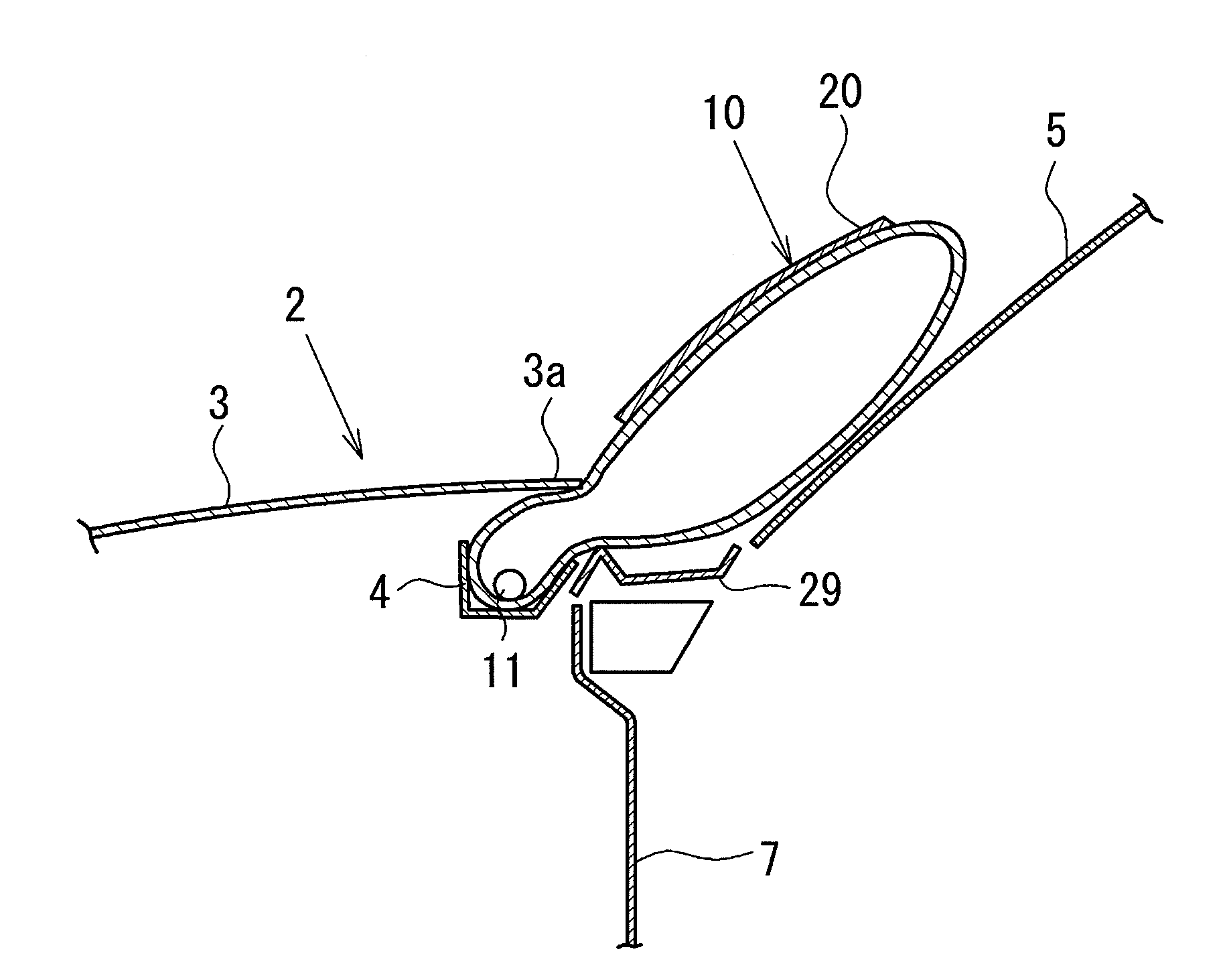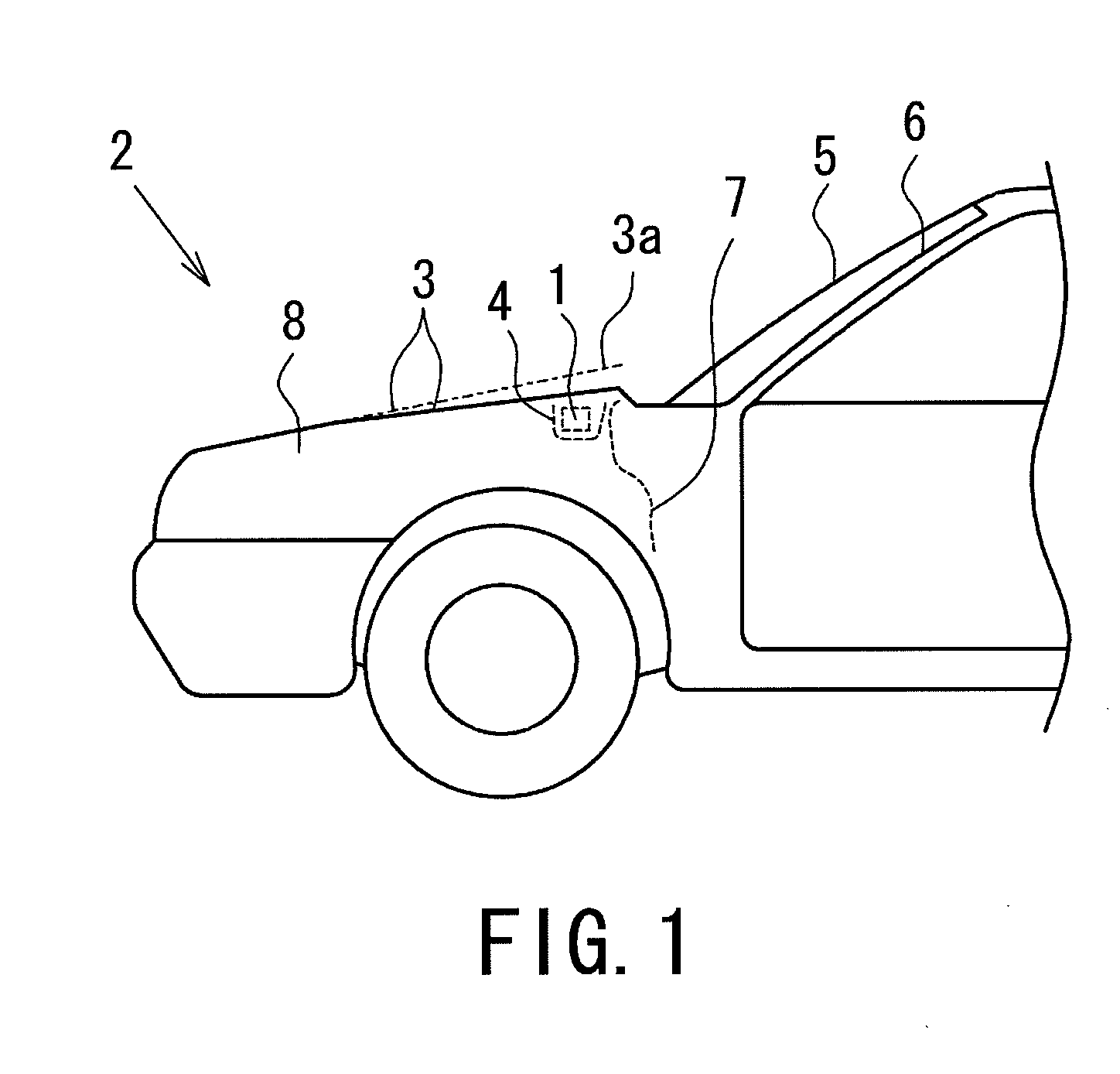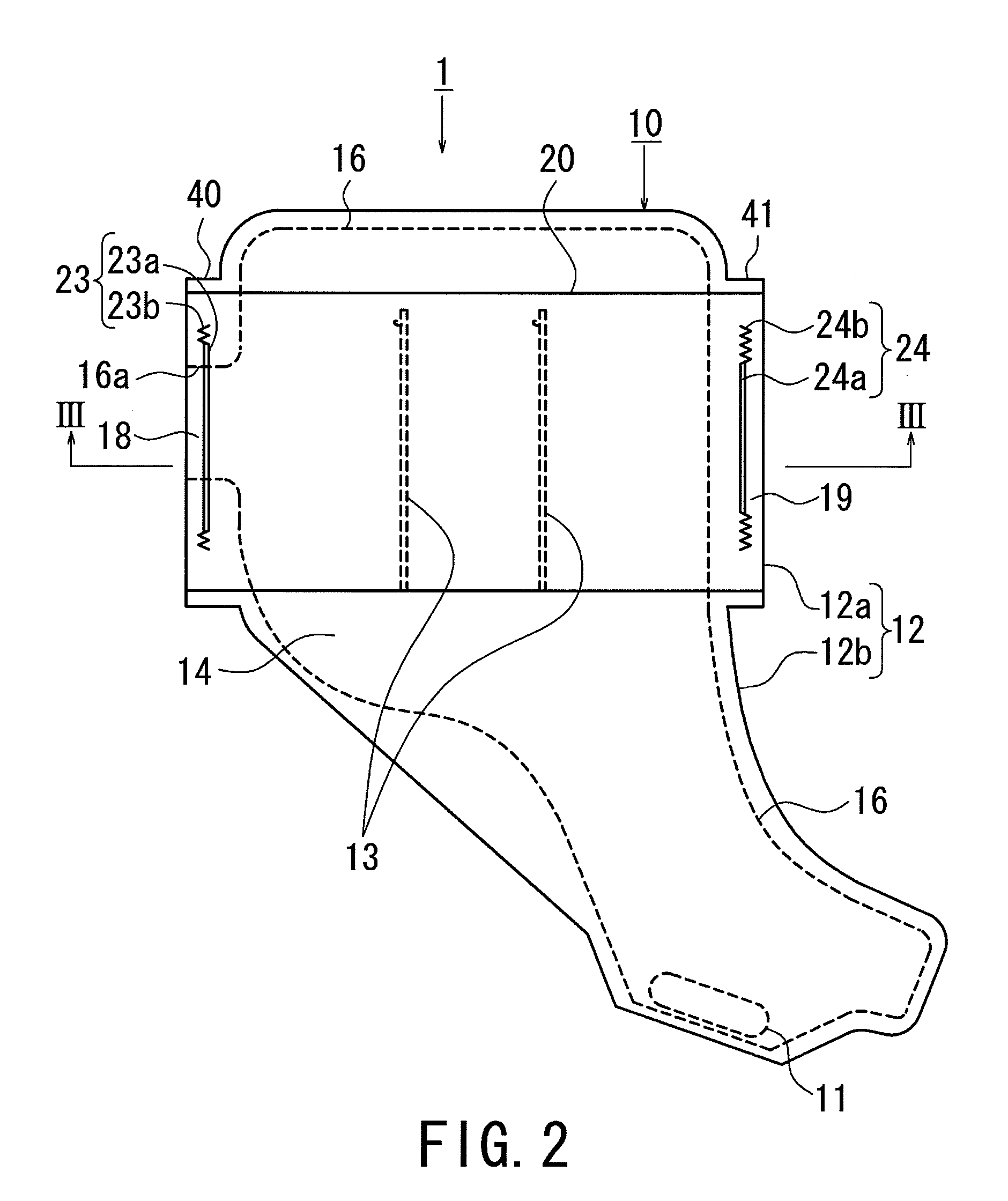Airbag device
a technology of airbags and airbags, which is applied in the direction of textiles and papermaking, vehicle components, sewing apparatuses, etc., can solve the problems of inability to maintain the inflation of airbags, serious head injuries, and impact damage to people, so as to reduce the impact on the person and reduce the impact timely
- Summary
- Abstract
- Description
- Claims
- Application Information
AI Technical Summary
Benefits of technology
Problems solved by technology
Method used
Image
Examples
first embodiment
[0070]In the airbag device 1 the length of the third base fabric 20 is set shorter than the length of the front surface base fabric 14 so that tension is applied to the sewn portions 23 and 24 between the third base fabric 20 and the airbag 10, during inflation and deployment of the airbag 10. When a person hits the third base fabric 20 during collision, the internal pressure of the airbag 10 increases. This increases tension to be applied to the third base fabric 20, whereby the sewn portion 23 of the third base fabric 20 can easily and assuredly be cut.
[0071]In this structure, the cutting strength of the sewn portion 23 needs to be set in such a manner that the sewn portion 23 is not cut during high-pressure deployment of the airbag 10, but is cut, even in a low-pressure state, when a person (dummy) pushed into the airbag 10. However, providing such a sewing structure is not always easy. Further, because tension is applied to the third base fabric 20 during inflation of the airba...
third embodiment
[0084]FIG. 8 is a front view of the airbag device according to the present invention.
[0085]In the airbag device according to the third embodiment, the pillar portion 12a has both left and right side ends 40 and 41 in the figure, where a first vent hole 18A and a second vent hole 18B are formed. Both end edges (or both side portions) of the third base fabric 20 are sewn to the front and back surface base fabrics 14 and 15 at the portions of the first vent hole 18A and the second vent hole 18B, along the first sewn portion 23 and the second sewn portion 24. The vent holes 18A and 18B are sewn along the straight-line sewn portions 23a and 24a, respectively, and closed. Because the other structures are the same as those of the airbag device according to the first embodiment, the description thereof will be omitted.
[0086]In the present embodiment, for example, if the head of a person pushes into the sewn portion 23 where the third base fabric 20 and the vent hole 18A are sewn together, a...
fourth embodiment
[0090]FIG. 9 shows an airbag device according to the present invention.
[0091]In the fourth embodiment, there are a rectangular pillar portion 12a and a projecting base portion 12b. A first vent hole 18A and a second vent hole 18B that are separated from each other by a certain distance are provided in an upper end 26 in the figure of the pillar portion 12a.
[0092]Two third base fabrics 20 (third base fabrics 20(1) and 20(2)) that are sewn to the first and second vent holes 18A and 18B, respectively, at one end, are provided in such a manner that they cover the pillar portion 12a and are arranged parallel to each other.
[0093]The present embodiment is used when vent holes cannot be provided in the transverse direction of the pillar portion 12a of the airbag 10.
[0094]In the fourth embodiment, the pillar portion 12a may have a single vent hole 18, for example, in the upper end 26 in the figure. Alternatively, the pillar portion 12a may have third and fourth vent holes 18C and 18D in a l...
PUM
 Login to View More
Login to View More Abstract
Description
Claims
Application Information
 Login to View More
Login to View More - R&D
- Intellectual Property
- Life Sciences
- Materials
- Tech Scout
- Unparalleled Data Quality
- Higher Quality Content
- 60% Fewer Hallucinations
Browse by: Latest US Patents, China's latest patents, Technical Efficacy Thesaurus, Application Domain, Technology Topic, Popular Technical Reports.
© 2025 PatSnap. All rights reserved.Legal|Privacy policy|Modern Slavery Act Transparency Statement|Sitemap|About US| Contact US: help@patsnap.com



